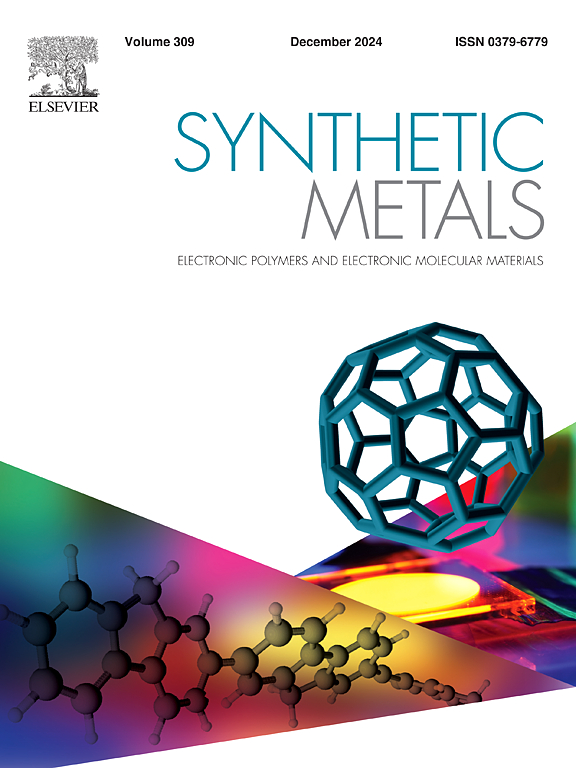抗溶剂优化 Cs3Bi2I9 非晶薄膜实现的超低暗电流和高灵敏度无铅类包晶光电探测器
IF 4
3区 材料科学
Q2 MATERIALS SCIENCE, MULTIDISCIPLINARY
引用次数: 0
摘要
与卤化铅包晶石相比,铋基包晶石具有较低的毒性和空气稳定性,显示出巨大的应用潜力,其中 Cs3Bi2I9 材料已被研究作为铅基包晶石的替代品应用于光电器件。实现高性能光电探测器需要高质量的包晶体薄膜,这一点至关重要。在此,我们采用旋涂法制备了无铅全无机 Cs3Bi2I9 类包晶石非晶薄膜,并在旋涂的不同时间段加入二乙醚作为反溶剂。结果表明,在 14 秒时加入反溶剂可得到均匀致密的 Cs3Bi2I9 非晶薄膜。此外,Cs3Bi2I9 类包晶紫外光探测器实现了约∼ pA 范围的极低暗电流,灵敏度高达 1.10 × 104。我们的研究表明,用简单的反溶剂辅助旋涂法制备 Cs3Bi2I9 非晶薄膜,在光电器件领域具有广阔的应用前景。本文章由计算机程序翻译,如有差异,请以英文原文为准。
Ultra-low dark current and high sensitivity lead-free perovskite–like photodetector realized by anti-solvent optimization Cs3Bi2I9 amorphous film
Compared with lead halide perovskite, bismuth-based perovskite has lower toxicity and air stability, demonstrating enormous potential for application, among them, Cs3Bi2I9 materials has been researched as an alternative to lead-based perovskite for application of optoelectronic devices. It is crucial for the realization of high-performance photodetectors which need high-quality perovskite thin films. Here, we prepared a lead-free, all-inorganic, Cs3Bi2I9 perovskite-like amorphous films by spin coating method, and diethyl ether was added as an anti-solvent at different times of spin-coating. The results show that the homogeneous and dense Cs3Bi2I9 amorphous films can be obtained by adding anti-solvent at 14 s. Furthermore, Cs3Bi2I9 perovskite-like UV photodetector achieved extremely low dark current around ∼ pA range, high sensitivity of 1.10 × 104 was fabricated. Our research shows that the preparation of Cs3Bi2I9 amorphous films by the simple antisolvent-assisted spin-coating method are very promising for optoelectronic device.
求助全文
通过发布文献求助,成功后即可免费获取论文全文。
去求助
来源期刊

Synthetic Metals
工程技术-材料科学:综合
CiteScore
8.30
自引率
4.50%
发文量
189
审稿时长
33 days
期刊介绍:
This journal is an international medium for the rapid publication of original research papers, short communications and subject reviews dealing with research on and applications of electronic polymers and electronic molecular materials including novel carbon architectures. These functional materials have the properties of metals, semiconductors or magnets and are distinguishable from elemental and alloy/binary metals, semiconductors and magnets.
 求助内容:
求助内容: 应助结果提醒方式:
应助结果提醒方式:


